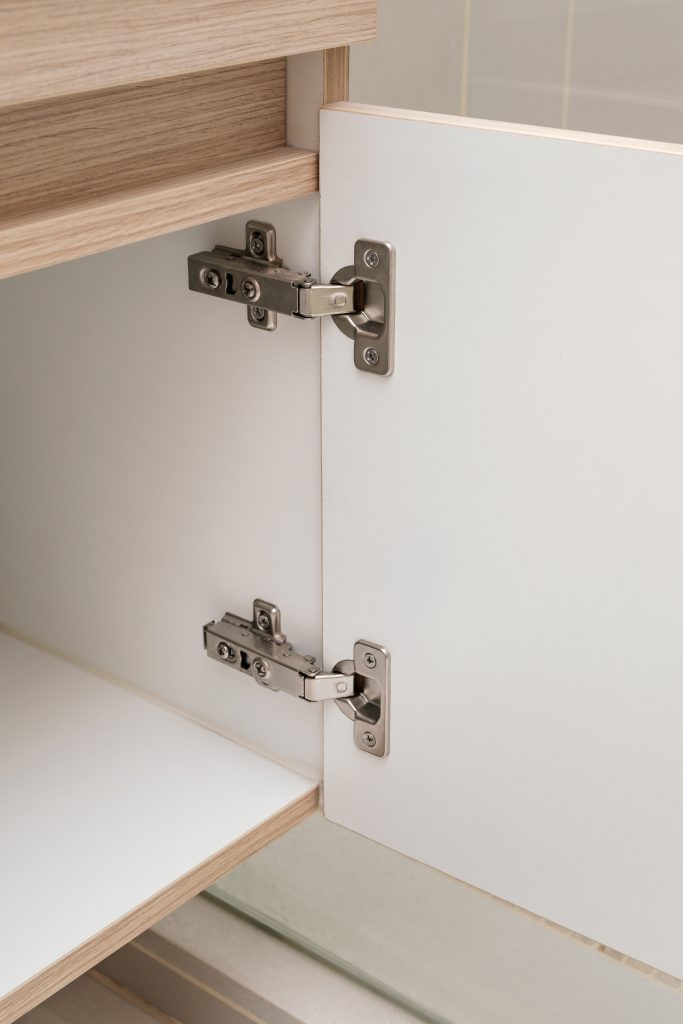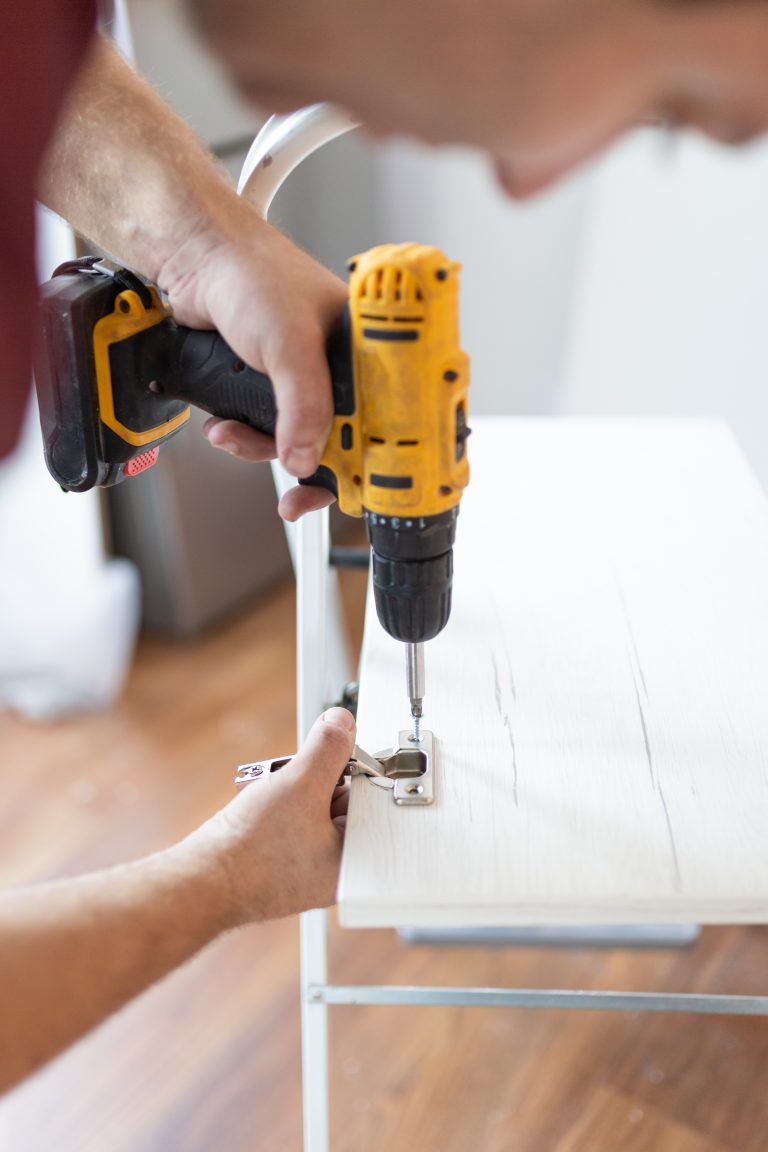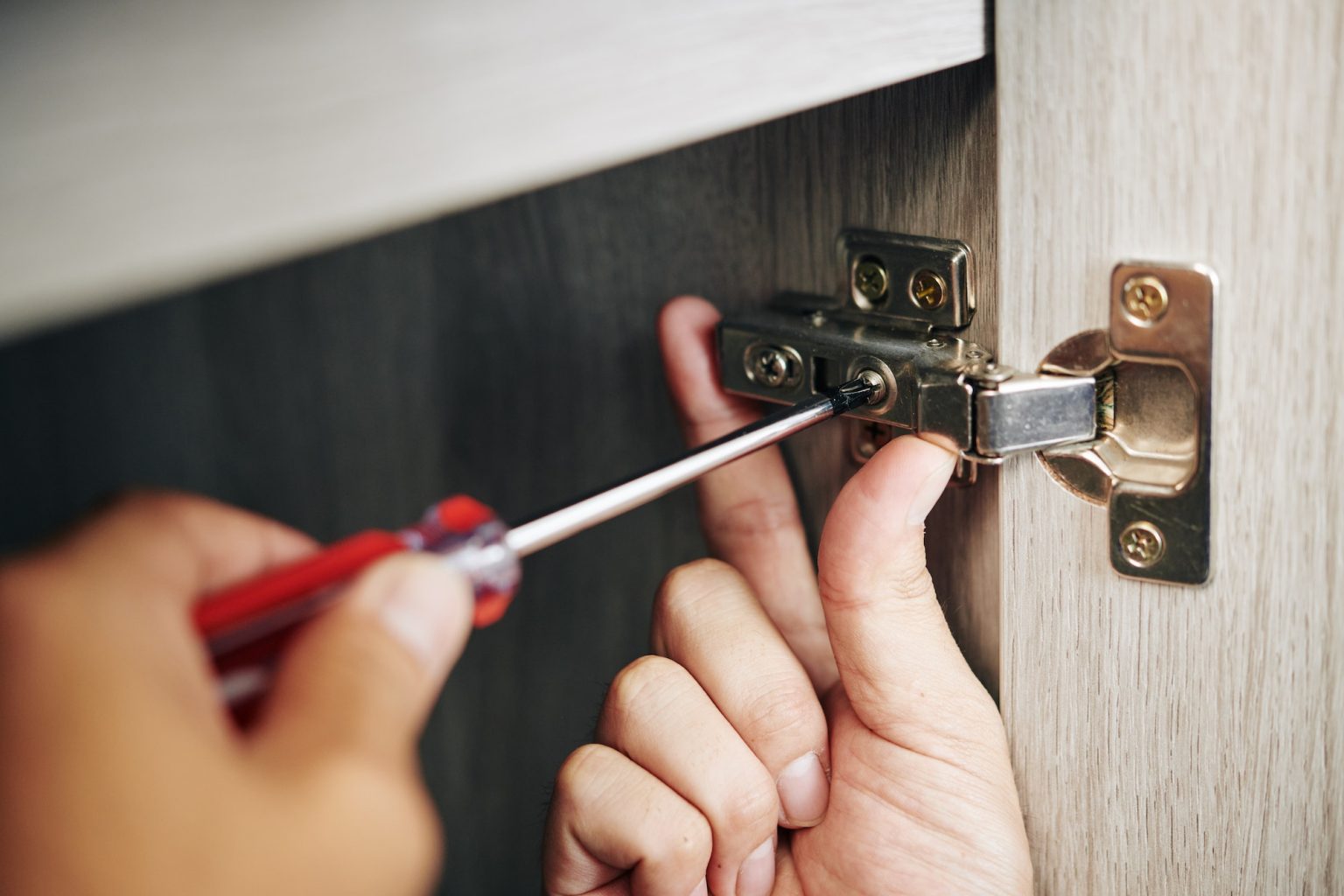Kitchen Cabinet Hinges: Types, Styles, and Selection Guide

At first glance, your kitchen cabinets might seem all about the doors. After all, they’re what people notice first, with their stylish looks, from shiny to classic shaker styles. They’re the stars of the kitchen show, right? Although the style of kitchen cabinet doors is important, there’s another part that people often forget – the simple hinge.
Cabinet hinges, the unnoticed helpers in your kitchen cabinets, work silently every day. They guide how your doors open and close, keep them straight, and add to their look when open.
Choosing the right hinges for your kitchen cabinets can really change how your kitchen looks and works. If you’re updating your old cabinets or picking parts for new ones, taking time to learn about hinges can really help. Making an informed choice ensures your cabinets not only look great but work smoothly for years to come.
Understanding Kitchen Cabinet Hinges


An Understanding of Cabinet Hinges
Cabinet hinges might seem like a simple concept, but there’s a lot more to these nifty devices than meets the eye. They don’t come in a standard size. Instead, there are various types, each made for certain door types, styles, and functions.
By learning about these choices, you’ll be able to pick the best one for your kitchen. This can improve how easy your cabinets are to use and how good they look.
Standard European Hinges
Standard European hinges, such as the 105 Degree and 120 Degree Hinges, offer a convenient solution for mounting cabinet doors. Consisting of two parts – the mounting bracket and the hinge itself – these hinges allow for easy removal of doors by simply pressing a tab on the mounting bracket. This feature is particularly useful when accessing areas like the space beneath the kitchen sink for repairs or installations.
However, it’s worth noting that the standard length hinges can take up significant space within the cabinet, especially if the cabinet frame is not flush with the box. Despite this drawback, installation is relatively straightforward as the bracket and hinge are installed separately before being snapped together, resulting in a secure door fit against the cabinet.
Compact Hinges
For those seeking a more space-efficient option, Compact European hinges provide a suitable alternative. These hinges, which fall under the category of Compact Hinges, occupy considerably less space within cabinets, making them ideal for areas with limited storage, such as pots and pans compartments. However, the installation process for compact hinges is slightly more challenging as the hinges need to be attached to the door before being mounted onto the cabinet as a whole.
Additionally, it’s important to note that these hinges hold the door approximately 1/4″ away from the box or frame. While this may be a minor consideration for some, it’s crucial to account for this gap when planning the overall design and functionality of the cabinet.
Concealed Hinges
Concealed hinges, as their name suggests, are hidden from sight when your cabinet door is shut. This creates a clean, streamlined look that can enhance the sleek appearance of a modern kitchen. They’re typically paired with full overlay and inset doors, adding to the neat, minimalist aesthetic. A kitchen featuring concealed hinges offers an uncluttered, sophisticated appeal.
Overlay Hinges
Inset Hinges
Soft Close Hinges
Blum Hinges
These hinges are a great choice if you want hinges that are strong and long-lasting. A respected brand in the industry, Blum offers a variety of hinge types, including their trailblazing soft close options. Whether you’re outfitting a brand new kitchen or upgrading your current hinges, Blum hinges provide a reliable, high-quality solution.
Picking the right hinge type might seem small, but it can really improve how your kitchen looks and works. From neat hidden hinges to quiet soft-close ones, there’s a right fit for all kitchen cabinets.

Replacement Cabinet Doors & Hinges
If you’re considering updating your kitchen by getting replacement cabinet doors, it’s the perfect time to look at your hinges too. Swapping out old hinges with new ones can ensure your doors hang properly and open smoothly. Just make sure to pick hinges that suit your new doors and meet your functionality needs.
Whether you’re redesigning your kitchen or just looking to make some upgrades, don’t overlook the importance of your kitchen cabinet hinges. By knowing about hinge types and your needs, you can pick the best hinges for a nice and useful kitchen.
Choosing the Right Cabinet Hinges
Type of Cabinet Door
First and foremost, you need to consider the type of cabinet door you have. Whether it’s inset, full overlay, or half overlay will guide which hinge type you’ll need. For instance, full overlay doors typically work best with concealed or full overlay hinges.
On the other hand, inset doors pair well with inset hinges. The right match ensures not only proper door function but also an aesthetic that looks deliberate and well-designed.
Kitchen Design Style
Your overall kitchen aesthetic should also inform your hinge choice. If your kitchen has a modern or minimalist vibe, concealed hinges will maintain that clean, streamlined look.
If you’re channeling a more traditional or vintage kitchen design, consider inset hinges. They’re visible when the cabinet doors are closed, adding to that old-world charm. Remember, even the smallest details can contribute to the overall look and feel of your space.
Desired Functionality
Finally, you should think about how you use your kitchen and what functionality you need from your hinges. Do you frequently access your cabinets, causing a constant opening and closing of doors? If so, soft close hinges could be a perfect choice. These hinges are designed to slow the closing speed of the door, resulting in a quiet and gentle shut.
This not only provides a luxurious feel but also extends the life of your cabinet doors by reducing wear and tear.
By understanding these things, you’ll be better able to choose hinges that make your kitchen work better and look great. It’s these thoughtful considerations that transform a good kitchen design into a great one.

Customer Service
Privacy & Terms
My Account
© 2020 Fastcabinetdoors.com. All Rights Reserved.


